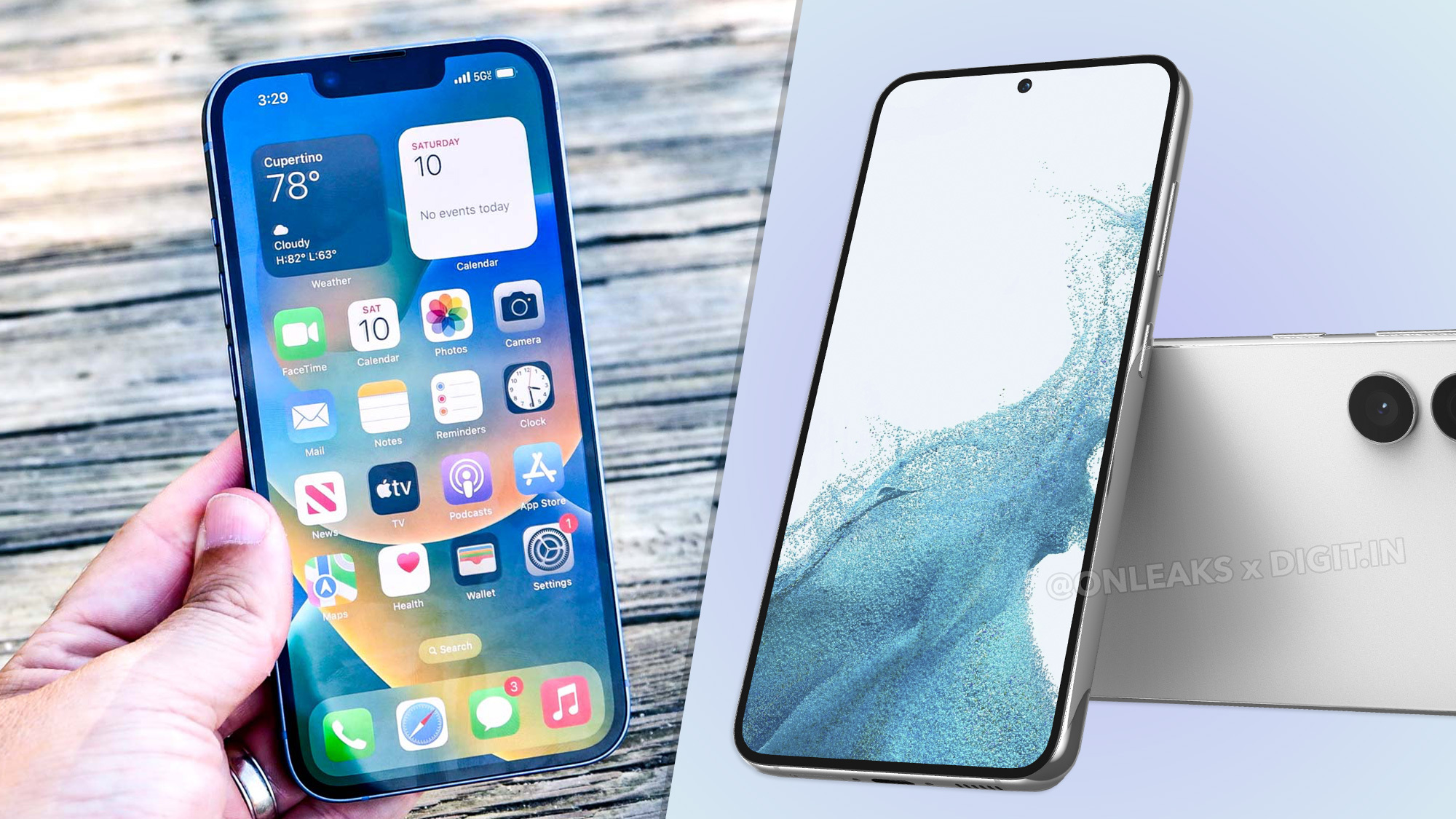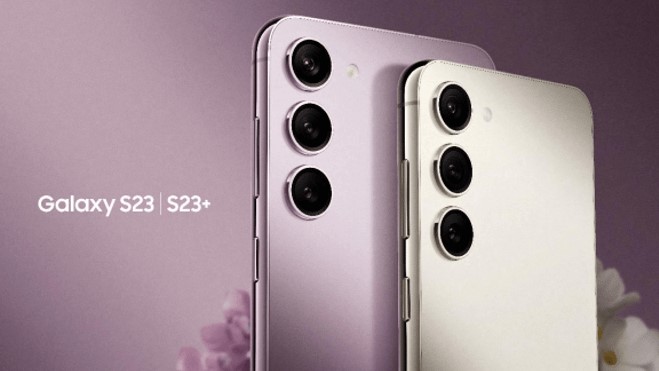Samsung Galaxy S23 beats iPhone 14 in 7 key ways, says leaker

The competition between flagship phones is already beginning to heat up days before Samsung is set to launch its Galaxy S23 series. The Galaxy Unpacked event is taking place Wednesday, February 1, where we should see the company announce the Galaxy S23, S23 Plus and the premium Galaxy S23 Ultra models.
While the Ultra model will compete closely with Apple’s iPhone 14 Pro and iPhone 14 Pro Max, the base Galaxy S23 will be pit against iPhone 14. The Galaxy S23 is rumored to launch at the same $799 price tag as the iPhone 14. It will be interesting to see which one offers more value at a similar price.
Now one prominent leaker has just listed seven areas on Twitter where the S23 could beat the iPhone 14.
iPhone 14 -> Galaxy S23• A15 -> SD8 Gen 2 for Galaxy• 12/12 -> 50/12/10 cameras• n/a vs 3x optical zoom• 6.1" 60hz Oled -> 6.1" 120hz Amoled Display• 1200 -> 1750 nits• 6gb -> 8gb ram• 3279mah -> 3900mah battery$799Reserve the S23 here: https://t.co/bVEJI5feUM pic.twitter.com/NxH8rJZQF0January 29, 2023
The leak may not be too far off from what we get to see at Samsung Unpacked, since the Galaxy S23 specs mentioned corroborate previous rumors on the phone. But let’s take a deeper look at comparison points mentioned to see if Samsung could really beat Apple this time.
Snapdragon 8 Gen 2 vs A15 Bionic
The Samsung Galaxy S23 is tipped to come with a custom Qualcomm Snapdragon 8 Gen 2 chip while the iPhone 14 runs on the A15 Bionic chip, which also powered the iPhone 13 series.
We had the chance to run some Snapdragon 8 Gen 2 benchmarks on a Qualcomm-supplied reference device (not the custom chip) and we were surprised to see numbers that topped that A15 Bionic in some tests.
The current Geekbench browser numbers for the iPhone 14 are 1,740 for single-core performance and 4,711 for multi-core performance. In our test of the Snapdragon reference design chip, we saw a 5,249 score for multi-core performance. Apple maintains its lead on single-core performance but Qualcomm is ahead on multi-core scores.
Get instant access to breaking news, the hottest reviews, great deals and helpful tips.
In fact, Samsung's custom chipset for the Galaxy S23 apparently runs at an even higher CPU clock speed of 3.36GHz — that is up from the 3.2GHz CPU clock speed of the base version of the SoC silicon. This means that Samsung could win when compared to the A15 Bionic.
Three 50/12/10 MP cameras vs Two 12MP cameras

Samsung might give its S23 Ultra model a big boost in megapixels with a 200MP camera, but the base S23 may stick to the same trio of rear cameras as the Galaxy S22 — 50MP main lens, 12MP ultra wide lens and another 12MP telephoto lens.
The iPhone 14 has dual 12MP cameras — a main lens and an ultrawide camera. Apple has stuck to its 12MP camera for a few years now and reserved its new 48MP camera for the iPhone 14 Pro and Pro Max.
On paper, it is clear that the S23 could pack in more megapixels than the iPhone 14. But more megapixels does not necessarily mean better pictures — it might mean more detailed images, but there are many other factors that come into play as well. For example, how big a camera sensor is determines how much light it can capture for low light shots. A lot of smartphone photography also relies on software and computational photography to deliver pleasing photos.
Samsung brought a 108MP camera on its Galaxy S22 Ultra and even though that was much higher than the megapixels that the Pixel 7 Pro and iPhone 14 Pro had, we noticed in our Galaxy S22 Ultra vs Pixel 7 Pro and Galaxy S22 Ultra vs iPhone 14 Pro Max face-offs that Samsung has been in third place against Apple and Google on our best camera phone page.
So while Samsung might bring more megapixels to the table with the S23, it may not be everything. Although, it is hard to deny that with an additional telephoto lens, compared to the iPhone 14, the S23 could have an edge.
3x optical zoom vs no optical zoom
Apple misses out on an optical zoom with the iPhone 14 and maxes out at just 5x digital zoom. The S23 is tipped to come with a 3x optical zoom like its predecessor. This is a straight point in favor of the S23 since the telephoto lens will offer a true 3x magnification.
In terms of digital zoom, Samsung could offer 30x digital zoom on the Galaxy S23, which again is much ahead of the 5x digital zoom that we get on the iPhone 14.

Samsung has been focussing a lot of its marketing on the Night mode that the new phones will be capable of, but the iPhone 14 is also great in low light. We'll have to test these phones side by side to see which set of cameras are better.
120Hz OLED display vs 60Hz
This isn't new, but Apple’s iPhone 14 should lag behind the Galaxy S23 with a lower screen refresh rate.
We tend to agree with the comparison here, because even though both phones will have an OLED display, at almost a double refresh rate difference, the S23 will be visibly faster. 60Hz seems outdated these days as more phones come with 90Hz and above.
We even noted this in our iPhone 14 review, where we said that the “biggest missing feature is a 120Hz refresh rate, which the Galaxy S22 offers.” This time again, Samsung could offer super smooth scrolling or animation in supported games with the Galaxy S23.
1,750 nit vs 1,200 nit display
The Galaxy S22 had a maximum screen brightness of 1,500 nits and this time leaks mention that Samsung could boost that number to 1,750 nits on the Samsung S23.
This is again ahead of the iPhone 14 that comes with 1,200 nits of maximum brightness. Like megapixels in a camera, brightness may not be everything in a display but Samsung’s phone could have a brighter screen.
The S23 is expected to have a Dynamic OLED display while iPhone 14 has a Super Retina XDR display that is one of the best displays we have tested.
In our lab tests, the iPhone 14 did slightly better than the Galaxy S22 in Natural mode.
iPhone 14 registered 117.4% of the sRGB color gamut and 83.1% of the more demanding DCI-P3 color space. For comparison, the Galaxy S22 reached 110% and 77.9% on the same tests in Natural mode but a higher 210.4/149.1% in Vivid mode. Once the S23 is launched we will have to see how it does in this test as well.
8GB vs 6GB of RAM
The leaker mentions RAM in one of his points while comparing iPhone 14 to S23 but it is likely that this doesn’t alone make a big difference to a user’s day-to-day use. Other factors like performance of the chip and software also make a difference.
The Galaxy S23's additional RAM could help with multitasking between several open apps, but we don't think it's going to be much of a selling point.
3,900 mAh battery vs 3,279 mAh battery
Battery life has been one area where Samsung has been trailing behind Apple. The iPhone 14 beat the Galaxy S22 by over an hour in our iPhone 14 battery test. The iPhone 14 clocked 9 hours and 28 minutes while the S22 reached 8 hours and 2 minutes. This was with the S22’s display locked to 60Hz.
The iPhone 14 has a 3,279 mAh battery and the Galaxy S23 is expected to go up to 3,900 mAh this time. But a larger battery may not be enough for Samsung to increase its phone's battery life and it might have to turn to the Snapdragon 8 Gen 2 chip for more power efficiency.
Galaxy S23 vs iPhone 14: Outlook
Of course, the biggest difference between iPhone 14 and Galaxy S23 will be their operating systems. The iPhone 14 runs on iOS 16 and the Galaxy S23 will come with Android 13 and run OneUI 5.1. So the phone you chose will likely boil down to which OS and which ecosystem you prefer.
But there's no denying that the Galaxy S23 should have some advantages over the iPhone 14. This includes the faster refresh display, additional telephoto camera and potentially brighter display. The new Snapdragon chip could also outperform the A15 Bionic, at least on multi-core performance and maybe graphics.
These are all specs on paper, though. Once the Galaxy S23 is here we will have to see how it actually performs and compare the device with Apple’s iPhone 14 series. You can also check out all the differences between the phones in our Galaxy S23 vs iPhone 14 preview face-off.
Stay tuned to our Galaxy S23 and Galaxy S23 Ultra hubs for all the latest updates, now that we are not very far from the Samsung launch event.
More from Tom's Guide
- How to watch Samsung Galaxy Unpacked event online
- 13 hidden Android features you should be using
- I test headphones for a living — these are the best for travel

Sanjana loves all things tech. From the latest phones, to quirky gadgets and the best deals, she's in sync with it all. Based in Atlanta, she is the news editor at Tom's Guide. Previously, she produced India's top technology show for NDTV and has been a tech news reporter on TV. Outside work, you can find her on a tennis court or sipping her favorite latte in instagrammable coffee shops in the city. Her work has appeared on NDTV Gadgets 360 and CNBC.
